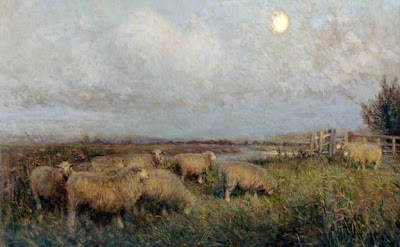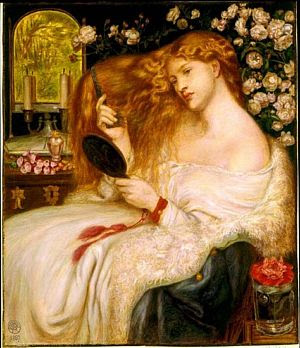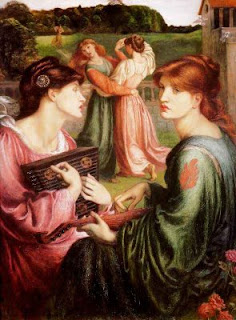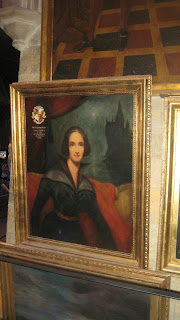This got me thinking: why would an obviously rural, traditional couple chose such an outlandish picture? One explanation is obviously it was an avenue offered to them, no doubt at a fair. Other such images are around if you look for 'Victorians on the Moon'...
 |
| Unknown Victorian/Edwardian Couple on the Moon |
Turning back to William and Louisa, the moon would have had certain connotations to the farm working couple. The 'Harvest Moon' provided light to gather in the supplies, making their long gruelling hours slightly more pleasant, aiding them in their work...
 |
| The Harvest Moon (1881) George Wetherbee |
There is nothing more romantic than canoodling precariously on a crescent moon. Why the moon would be such a hot spot for lovers is a little mysterious - maybe the notion of 'honeymoon', maybe the connotation that night time was for lovers? If romantic images of the moon are what you crave, there is no shortage of them...
 |
| Luna Evelyn de Morgan |
 |
| Luna Edward Burne-Jones |
 |
| Moonbeams Evelyn de Morgan |
 |
| Vision of Endymion Edmund Poynter |
 |
| Endymion and Selene (1850-60) Victor Pollet |
 |
| Sleeping Earth Waking Moon Evelyn de Morgan |
There is a definite link of rthe Victorians between the elements and the female form. One wonders at the connection between the 'female' earth and the man who works the land...
 |
| Moonrise (1909) John Pedder |
 |
| Reverie Marcus Stone |
Stone shows his contemplative muse sat in a moonslipped landscape. In a way it reminds me of John Byam Shaw's The Boer War, something about the woman beside the water, lost in thought. Again, the pale woman is reflected in the pale moon, tying her to that shining orb, her wakeful contemplation mirrored above her.
 |
| Sheba, the Night and the Moon (1913) Eric Robertson |
 |
| The Eclipse (1888) Paul Besnard |
A pagan interchangeability of woman and moon plays in the latter years of the nineteenth century, and is often referenced in the resulting art nouveau iconography. In the Fisher's rough portrait, they salute their pre-Christian past, working the land presumably since before such notions of church existed. It is cheering that despite the unchanging nature of their life, endless lack of social progress, working until you die, they still had a moment for fun, a cheeky portrait of the most unlikely dieties ever to be framed on a wall. There is something more whimsical, more romantic about the Fishers chosen portrait, than a more traditional arrangement, like the neighbouring Scarlett family's portrait, taken around the same time...
The Scarletts pose outside their cottage, the model of rural respectability, their daughters dressed in their Sunday best. Captured forever is their pride, their dignity and how they chose to portray themselves. There is no hint of levity, no romance. The Scarlett portrait is as straight as it gets outside a formal studio. The Fishers have apple-cheeked smiles, aware of their ridiculous backdrop and laughing with us at the playful madness.
The reason I was looking at the picture this week was that I have the good fortune to be descended from both families. William and Louisa Fisher are my maternal Grandfather's parents, and the little girl stood in front of her father in the Scarlett's family portrait is Daisy, my Grandmother. This is possibly why, from an early age I've always known that however much the Victorians struggled to keep up appearances, they always made time for fun.
And symbolism, obviously.











































